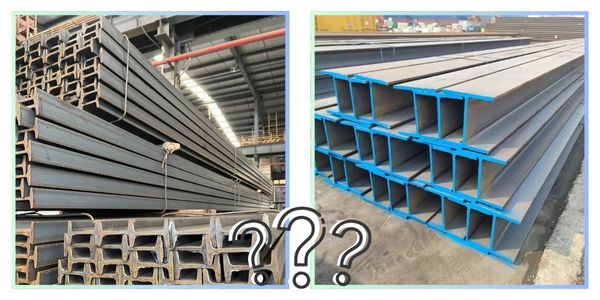

H-beams, crafted from rolled steel, constitute a particular variety of structural steel beams. Their characteristic wide flanges form a cross-section that resembles an uppercase H, rendering them a staple in metal construction endeavors.
In the realm of steel construction, encompassing structures such as buildings, mezzanines, and overhead cranes, the selection of the appropriate steel beams is of paramount importance. Different steel beam types possess specific attributes that are more attuned to particular applications.
The term I-beam is frequently encountered, yet it serves as a more generalized umbrella term for structural steel beams of diverse sizes and proportions. The relationship between the flange (horizontal) and web (vertical) constituents is a crucial determinant in differentiating among various steel beam varieties.
Regrettably, there exists a lack of uniformity in the description of manufactured steel. When a construction project demands a wide-flange structural steel beam, the question arises: is an H-beam, a W-beam, or perhaps an I-beam more fitting?
Within this article, we will meticulously elucidate the precise nature of an H-beam, how it diverges from a W-beam and an I-beam, and the types of applications to which it is optimally suited.

Applications of H-Beams:
H-beams find utility in a vast spectrum of metal construction undertakings. Ranging from relatively diminutive applications like trailers to colossal ones such as towering steel edifices, the wide flange design and welded fabrication endow H-beams with an unrivaled strength-to-weight ratio.
The flanges of an H-beam are nearly as extensive as the height of the web, bestowing upon the beam an approximately square cross-section. This augmentation in surface area augments the beam's resistance to buckling, which is the principal reason it is predominantly employed vertically as a column in steel structures.
Distinction between an H-Beam and an I-Beam:
I-beams and H-beams exhibit markedly disparate proportions of web to flange dimensions. Each cross-sectional configuration harbors its own merits, making them suitable for distinct applications.
I-beams – or S-beams, depending on the nomenclature preference – possess a slender and tall web accompanied by thicker flanges that taper at an inclination of 1:10. The flanges are relatively narrow in comparison to the web height, thereby conferring upon them the characteristic cross-sectional shape of an uppercase I.
While they do possess high strength-to-weight characteristics and a significant degree of resistance to bending, they are deficient in torsional strength. They are frequently utilized for support frames and columns in applications such as elevators, trailers, trolley ways, and hoists.
Analogously to H-beams, I-beams are also incorporated in structural steel buildings and bridges. However, their relatively limited span of up to 100 feet may necessitate the inclusion of supplementary support columns.
On a pound-for-pound basis, an H-beam is stronger than an I-beam and is eminently suitable for extreme environments. In addition to withstanding direct and tensile loads, H-beams generally curtail the overall project cost in contrast to I-beams, as they can traverse longer distances with fewer support columns.
